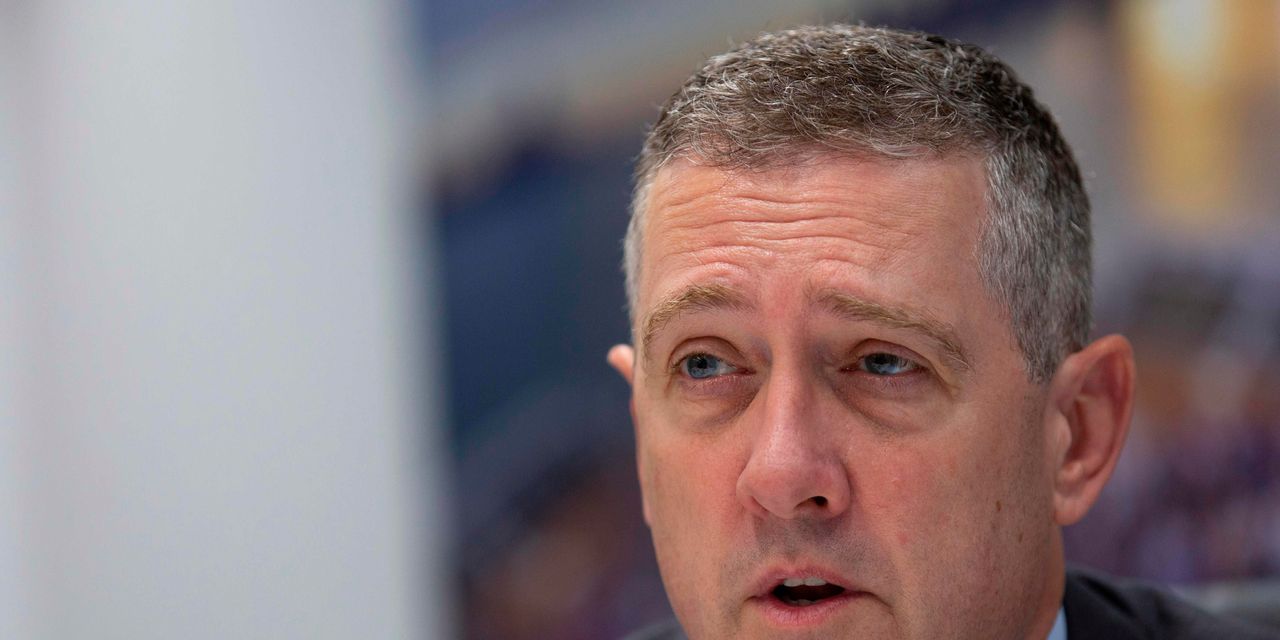The Federal Reserve can get inflation back down to its 2% target without throwing a wrench in the strong labor market, said St. Louis Fed President James Bullard on Wednesday.
In an interview on Bloomberg Television, Bullard said that disinflation will come when companies stop raising prices.
“I think it is going to come from the product side of this process — where firms worry about the loss of market share — and for that reason they do not want to increase prices as rapidly as their competitors, and this leads to a 2% rate of inflation instead of an 8% rate of inflation,” Bullard said.
Bullard marches to a different drummer than most Fed officials, who believe the labor market is the key driver of inflation. Those officials see a clear relationship between wages and inflation expressed in a Phillips Curve chart. In this view, the unemployment rate has to rise to get inflation pressures down and so there has to be “pain” to get inflation to decrease.
“I do not think [disinflation] is going to work through the labor markets the way other people think,” Bullard said. “It is a little puzzling where the story is coming from,” he said, noting the Phillips Curve has been flat for the past 20 years.
The St. Louis Fed president said the labor market is one of the best of the post-World War II era.
“It is a great time to be fighting inflation and it is a great time to try to nip inflation in the bud…while the labor market is strong,” Bullard said.
He said he expects inflation to move lower during the first half of 2023.
The St. Louis Fed president did not have much new to add on the outlook for the Fed’s benchmark interest rate.
The Fed’s “dot plot” penciled in a 0.75-percentage-point hike in November, followed by a half-percentage-point move in December and a quarter-point move early next year. That would bring the fed funds rate to a range of 4.5%-4.75%.
Bullard would not comment on the size of the interest-rate hike he will support at the Nov. 1-2 meeting, while noting the market has fully priced in a fourth 0.75-percentage-point rate hike.
Bullard also said he didn’t want to prejudge what the Fed will do in December. The Fed could decide to move the 2023 rate hike into December, but he said that was a tactical decision.
The central bank “wants to get its policy rate up to a level where we can put meaningful downward pressure on inflation. I think that’s the main goal immediately ahead of us,” Bullard said.
Then the Fed can return to “ordinary” monetary policy, where interest rates can be adjusted depending on the data, and will be out of this “very rapid rise in rates.”
Asked whether the level of rates that puts pressure on inflation is above 5%, as some economists have suggested, Bullard said the Fed could be driven to raise rates that high if the inflation data doesn’t cooperate.
Stocks
DJIA,
SPX,
were lower on Wednesday while the 10-year Treasury note
TMUBMUSD10Y,
rose to 4.13%.

